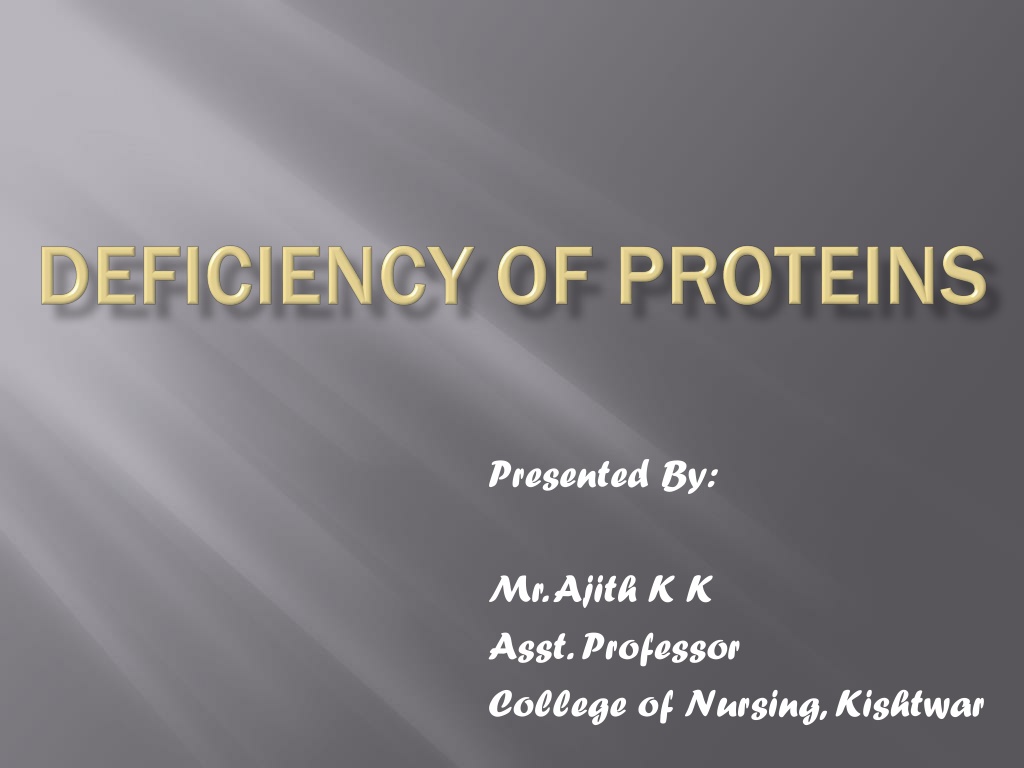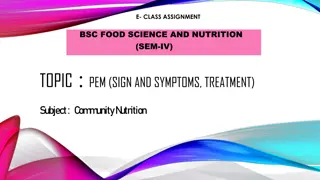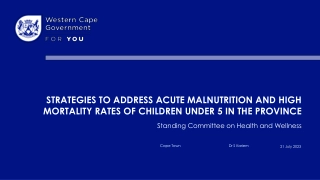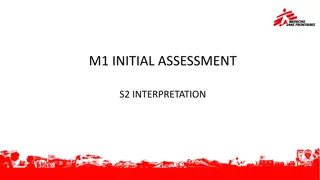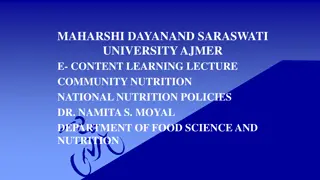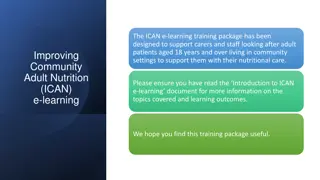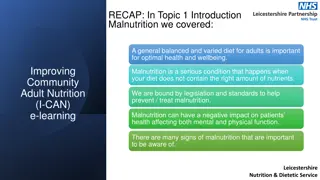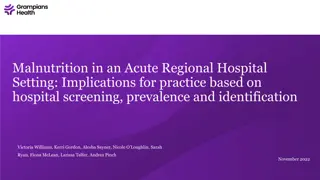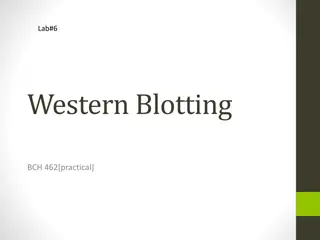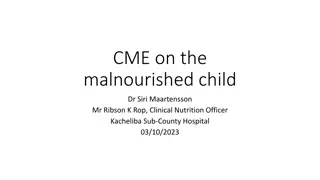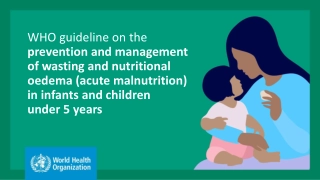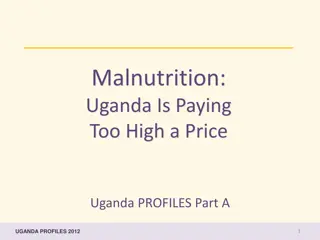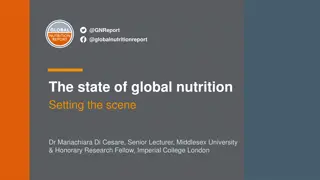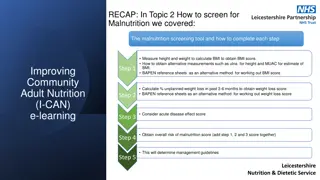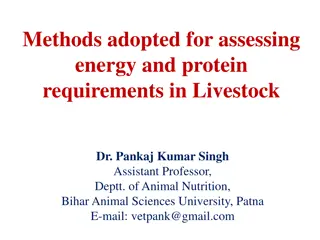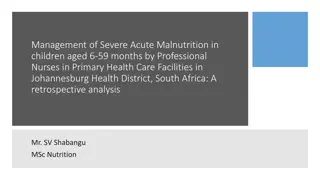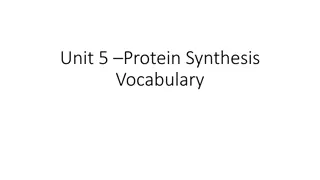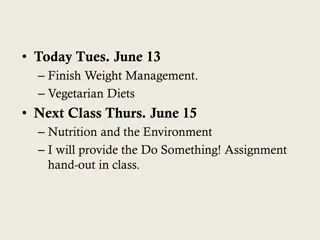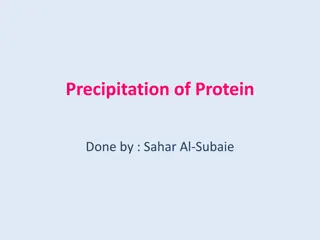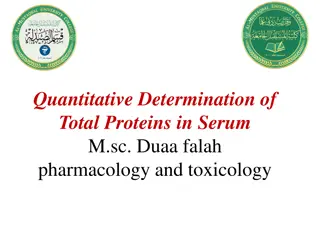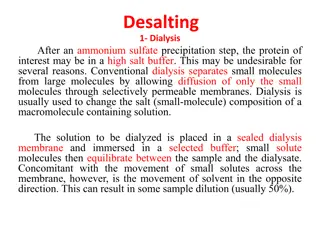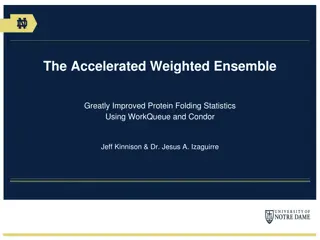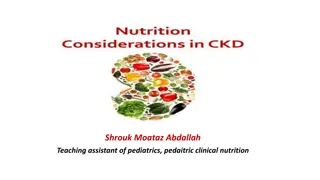Understanding Protein Energy Malnutrition (PEM) in Children
Protein Energy Malnutrition (PEM) is a significant cause of morbidity and mortality in children, leading to physical and mental growth impairments. Conditions like Kwashiorkor and Marasmus are results of protein and calorie deficiency, impacting growth and overall health. Factors like inadequate food intake, infections, poor sanitation, and cultural practices contribute to PEM. Recognizing the signs and symptoms of PEM, such as muscle wasting, edema, and mental changes, is crucial in addressing this health issue early on.
Download Presentation

Please find below an Image/Link to download the presentation.
The content on the website is provided AS IS for your information and personal use only. It may not be sold, licensed, or shared on other websites without obtaining consent from the author. Download presentation by click this link. If you encounter any issues during the download, it is possible that the publisher has removed the file from their server.
E N D
Presentation Transcript
Presented By: Mr. Ajith K K Asst. Professor College of Nursing, Kishtwar
Protein Energy Malnutrition (PEM) or Protein Caloric Malnutrition (PCM) has been identified as not only an important cause of children morbidity and mortality but also leads to permanent impairment of physical and mental growth.
Kwashiorkor is caused by the deficiency of proteins in diet. The main features are growth failure, edema, diarrhoea, anaemia, and changes in skin and hair. Marasmus is caused by severe deficiency of both proteins and calories in the diet. This is characterized by growth failure, loss of fat, signs of dehydration, and mental changes.
An inadequate intake of food in quantity and quality. Infections like diarrhoea, measles, respiratory infections and intestinal worms. Poor environmental sanitation. Large family size. Poor maternal health. Failure of lactation. Premature termination of breast feeding. Adverse cultural practices related to breast feeding and weaning.
Signs and Signs and symptoms symptoms Marasmus Marasmus Kwashiorkor Kwashiorkor Sometimes hidden by edema and fat Muscle wasting Obvious Severe loss of subcutaneous fat Fat loss No loss of fat Usually present on lower limbs, lower arms and face. Edema Not present Weight for height Very low Very low
Signs and Signs and symptoms symptoms Marasmus Marasmus Kwashiorkor Kwashiorkor Face look Like monkey face Moon face Sometimes quiet and apathetic Mental changes Very rare appetite Usually good Poor Often Diarrhoea Often
Signs and Signs and symptoms symptoms Marasmus Marasmus Kwashiorkor Kwashiorkor Diffuse pigmentation, sometimes flaky pain, dermatoses. Skin changes Usually none Sparse, silky, and easily pulled out. Hair changes Usually none Sometimes present due to accumulation of fat. Liver enlargement None
Underweight for age. Road to health growth chart.
a) Gomezs classification Weight for age (%) = (weight of (weight / child) the of a normal child of the same age) 100 * Degree of PEM is classified as: Weight between 90 110% = Normal nutritional status Weight between 75 89% = 1st degree malnutrition (mild) Weight between 60 74% = 2nd degree malnutrition (moderate) Weight below 60% = 3rd degree malnutrition (severe)
b) Waterflows classification Weight height Weight height Height Height age m m 2SD m m 2SD 2SD 2SD age m 2SD Normal Wasted Wasted and stunted m 2SD Stunted
Grading according to Waterflows calculation Stunting (% of Stunting (% of Height Age) Height Age) Wasting (% of Wasting (% of Weight Height) Weight Height) Nutritional Status Nutritional Status 95 90 Normal Mildly impaired 87.5 95 80 90 Moderately impaired 80 87.5 70 80 80 70 Severely impaired
Arm circumference c) Arm Circumference Arm Circumference Nutritional Status Nutritional Status Satisfactory nutritional status 13.5cm Mild moderate malnutrition 12.5 13.5cm 12.5 cm Severe malnutrition
A) Health Promotion Measures are directed to pregnant and lactating women (education and nutritional supplements.) Promotion of breast feeding. Development of low cost weaning foods. Improvement of family diet. Nutrition education. Home economics. Family planning and spacing of birth.
B) Specific Protection Diet of the child must contain protein and energy rich foods such as milk, eggs, fresh fruits. Immunization against diseases. Food fortification. Early detection and treatment. Periodic surveillance. Early diagnosis with degrees of malnutrition. In case of PEM, good quality protein 3 4 g kg body weight day should be given. ORS for children with diarrhoea. Deworming of infested children.
C) Rehabilitation Nutritional rehabilitation services Hospital treatment in case of severe PEM. Follow up care.
